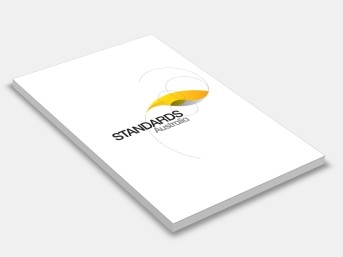AS 1670.4:2018 Fire detection, warning, control and intercom systems - System design, installation and commissioning, Part 4: Emergency warning and intercom systems
Standards Australia
This Standard was prepared by the Standards Australia Committee FP-002, Fire Detection, Warning, Control and Intercom Systems, to supersede AS 1670.4 —2015, Fire detection, warning, control and intercom systems — System design, installation and commissioning, Part 4: Emergency warning and intercom systems.
This Standard incorporates Amendment No. 1 (Month 2021). The start and end of changes introduced by the Amendment are indicated in the text by tags including the amendment number 1.
The objective of this Standard is to specify the design, installation and commissioning requirements for emergency warning systems and emergency intercom systems used in buildings for the evacuation of building occupants in the event of a fire or other type of emergency.
This Standard specifies the use of emergency warning control and indicating equipment (EWCIE) which conforms to AS 4428.16, Grade 1.
The changes in this revision are as follows:
A) Revision of the definitions
B) Alignment of common clauses and appendices with AS 1670.1
C) Restructured clauses to improve readability and comprehension
D) Added Clause 2.1.101 EWS as a part of a FDAS
E) Upgrading the connectable devices clause (2.1.4) to accommodate the use of mobile devices
F) Reviewed Clause 2.4
G) Revised Clause 2.5 with concessions to reduce the costs of EWS/EWIS in large single compartments
H) Revised Clause 4.7 in relation to car parks
Maintenance requirements for emergency warning and intercom systems are given in AS 1851.
Appendices have been aligned with AS 1670.1 where the topics are the same.
The terms “normative” and “informative” have been used in this Standard to define the application of the appendices to which they apply. A “normative” appendix is an integral part of a Standard, whereas an “informative” appendix is only for information and guidance.
This edition also permits the use of two editions of relevant Standards relating to components. See Table 1.8 for the list of relevant editions of the Standards which apply throughout this document.
Originated as part of AS 2220-1978. Previous edition AS 2220.2-1989. Revised and redesignated as AS 1670.4-2004. Second edition AS 1670.4:2015. This edition 2018. Reissued incorporating Amendment No 1 (November 2021).
An emergency warning system and emergency intercom system functions as a life-safety system when it is installed within a building or site. It may utilize an emergency warning system with full manual controls (e.g. AS 4428.16, Grade 1) in combination with an emergency intercom system (e.g. AS 4428.4).
The purpose of a system installed to this Standard is to facilitate an orderly evacuation, relocation or direction of personnel in emergencies such as, but not limited to, fire, smoke, civil commotion, bomb threats, siege, explosion, leakage of toxic substances or fumes, and structural damage. A guide to the development of evacuation procedures is described in AS 3745.To achieve this aim, the emergency warning and emergency intercom system has the following capabilities as appropriate:
(a) Receive alarm signals from an emergency detection system
(b) Delivery of intelligible speech for emergency announcements and directions
(c) Provide audible, and where required, visual emergency warning signals
(d) Provision for automatic and manual operation
(e) Continuous operation under conditions of the emergency
(f) Independence from other systems in manual operation
(g) Provide means of communication between the chief warden and the floor or area wardens
This Standard specifies requirements for the design, installation and commissioning of emergency warning and emergency intercom systems comprised of components conforming to the requirements of the applicable normatively referenced Standards.
NOTE 1: The general procedures for the use of the emergency warning and intercom systems and the response of personnel are given in AS 3745.
NOTE 2: Where an installer’s statement is requested a typical example is given in Appendix F.
Contents:
Section 1: Scope And General
Section 2: System Configuration
Section 3: Installation Requirements
Section 4: Emergency Warning System Installation Requirements
Section 5: Emergency Intercom System Installation Requirements
Appendix A: (Informative) Commissioning
Appendix B: (Informative) Wiring Systems
Appendix C: (Informative) Power Source Calculation Examples
Appendix D: (Normative) Drawings And Symbols
Appendix E: (Informative) Designer’s Statement
Appendix F: (Informative) Installer’s Statement
Appendix G: (Informative) Commissioning Statement
Appendix H: (Normative) Sound Pressure Level Measurements
Appendix I: (Normative) Measurement Of Speech Intelligibility
Appendix J: (Informative) Methods Of Measuring Speech Intelligibility
Appendix K: (Informative) Lettering Checklist
Bibliography
Amendment Control Sheet
Fire Detection, Warning, Control and Intercom Systems.
Association of Hydraulic Services Consultants Australia; Australasian Fire and Emergency Service Authorities Council; Australian Building Codes Board; Australian Chamber of Commerce and Industry; Australian Industry Group; Australian Institute of Building Surveyors; CSIRO; Deafness Forum of Australia; Department of Health and Human Services, Vic.; Engineers Australia; Fire Protection Association Australia; National Electrical and Communications Association; National Fire Industry Association; Property Council of Australia; Society of Fire Safety.
